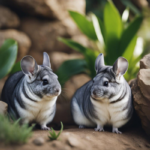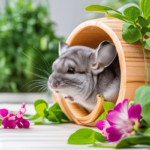Welcome to the exciting world of chinchilla care, we’re creating a custom DIY chinchilla cage that becomes a labour of love. In this comprehensive guide, we’ll explore the ins and outs of fashioning a comfortable and stimulating environment for your fluffy companion. From the basics of design to the nitty-gritty details of construction, we’ve got you covered.
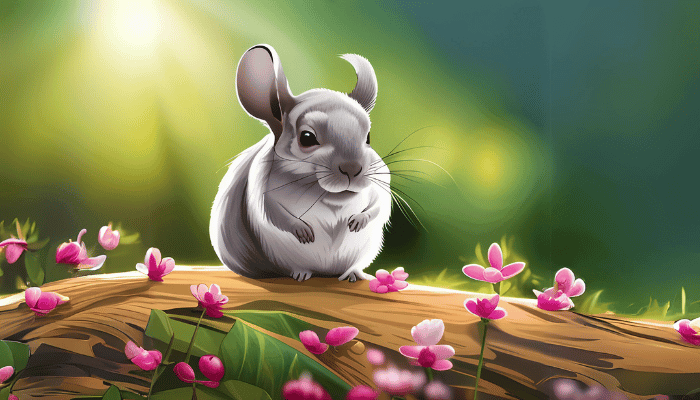
The Basics of DIY Chinchilla Cage Building
Building a chinchilla cage from scratch may seem daunting, but fear not – it’s a rewarding endeavour that ensures your pet has a comfortable and secure space. Let’s break down the basics:
Why Build a DIY Chinchilla Cage?
Why opt for a DIY approach when commercial cages are readily available? The answer lies in customization. Designing your chinchilla’s cage allows you to tailor it to their specific needs, ensuring a perfect fit for both space and comfort.
Why Go DIY? Unraveling the Benefits
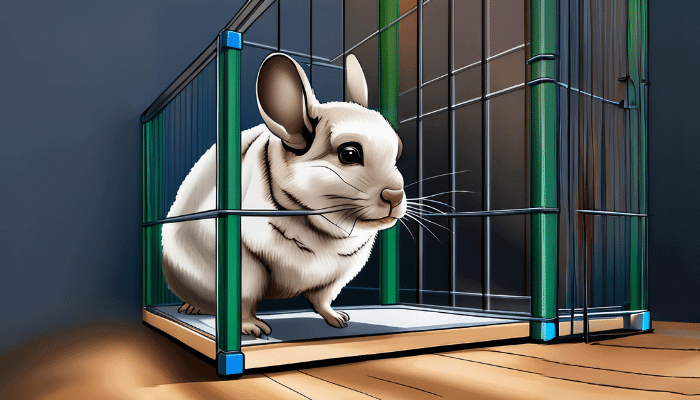
Ever wondered why you should embark on the DIY journey for your chinchilla’s dwelling? Let’s break down the perks:
Cost-Effective and Customizable
Creating your chinchilla cage allows you to tailor it to your budget and your pet’s unique preferences. You can choose materials that balance affordability with quality, ensuring a personalized and budget-friendly solution.
Bonding through Building
Building a cage from scratch provides an excellent opportunity for bonding with your chinchilla. Your scent gets embedded in the materials, fostering a sense of familiarity and trust between you and your little friend.
Size Matters: Room to Roam
Commercial cages often fall short on space. With a DIY approach, you can ensure your chinchilla has ample room to hop, skip, and jump around. It’s like a personalized playground for your energetic fluffball.
Choosing the Right Materials
Into the construction process, it’s crucial to select materials that ensure both safety and durability for your chinchilla. Opt for untreated wood, as many chemicals found in treated wood can be harmful to these sensitive pets.
Getting Started: Materials and Tools

Now that you’re convinced, let’s gather the tools of the trade for your DIY adventure:
Materials Checklist
- Plywood sheets
- Wire mesh
- Non-toxic wood glue
- Screws and screwdriver
- Latches for doors
- Washable paint (non-toxic, of course)
- PVC pipes for tunnels
Tools of the Trade
- Circular saw
- Power drill
- Staple gun
- Sandpaper
- Paintbrushes
- Tape measure
DIY Chinchilla Cage: Step-by-Step Construction Guide
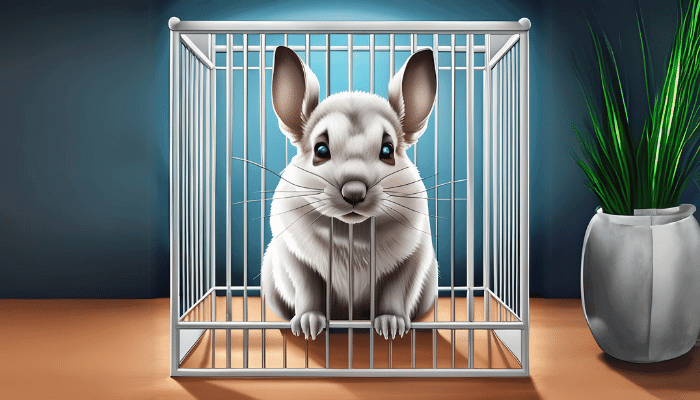
Planning Your Design
Sketch a blueprint. Consider levels, platforms, and tunnels to create an engaging and dynamic space for your chinchilla.
Cutting the Plywood
Measure twice, cut once! Use a circular saw to cut the plywood sheets according to your design. Smooth any rough edges with sandpaper.
Assembling the Frame
Construct the frame of the cage using the cut plywood and wood glue. Reinforce it with screws for stability.
Adding Wire Mesh
Attach the wire mesh to the frame using a staple gun. Ensure it’s securely fastened to prevent any Houdini-style escapes.
Creating Doors and Latches
Cut openings for doors, attach hinges, and secure them with latches. Safety first double-check that there are no sharp edges.
Ventilation is Key
Drill small ventilation holes to ensure proper airflow. This helps maintain a comfortable and healthy environment for your chinchilla.
Painting Time!
Paint the cage with a pet-safe, washable paint. Not only does it add a pop of color, but it also makes cleaning a breeze.
Adding PVC Tunnels
Enhance the cage’s playability by incorporating PVC pipes as tunnels. Chinchillas love to explore, and tunnels provide the perfect opportunity.
Double-Check for Safety
Inspect the cage thoroughly. Ensure there are no loose screws, rough edges, or potential hazards for your furry friend.
Introducing Your Chinchilla to Their New Home
Gradually introduce your chinchilla to the new cage. Place some familiar items inside, allowing them to acclimate at their own pace.
DIY Chinchilla Cage: Tips and Tricks
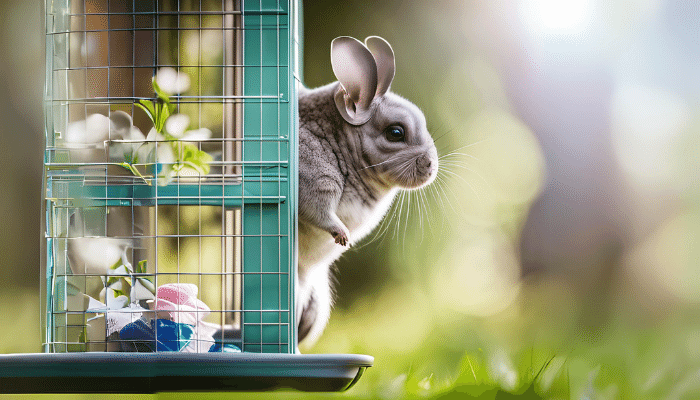
Crafting a DIY chinchilla cage is an art, and every artist needs a few tricks up their sleeve. Here are some tips to elevate your cage-building skills:
Use Zip Ties Wisely: Opt for reusable zip ties to make adjustments without compromising the cage’s integrity.
Incorporate Colorful Elements: Chinchillas enjoy visual stimulation. Add pops of color through accessories or toys to keep them engaged.
DIY Hammocks and Platforms: Save money by crafting hammocks and platforms using old fabric or pet-safe materials.
Conclusion
Crafting a DIY chinchilla cage is not just a creative endeavour but a labour of love for your furry companion. By understanding their needs and incorporating these ideas into your design, you’re not just building a cage; you’re creating a home.
So, grab your tools, unleash your creativity, and give your chinchilla a sanctuary they’ll truly cherish. DIY chinchilla cage – because every fluffball deserves a tailor-made haven!
DIY Chinchilla Cage: FAQs

Can I Use Treated Wood for the Cage?
No, it’s best to avoid treated wood, as the chemicals can be harmful to chinchillas. Stick to untreated wood to ensure the safety of your furry friend.
Can I Use Any Type of Wood?
Stick to hardwoods like birch or oak, avoiding softwoods like pine, which can be harmful to chinchillas.
How Big Should the Cage Be?
The bigger, the better! Aim for a cage that’s at least 3 feet by 2 feet by 2 feet to provide ample space for your chinchilla to move around.
What’s the Best Flooring Material?
Fleece or soft bedding is ideal for the cage floor. It’s gentle on their feet and provides a cozy surface.
Can I Add Wheels for Mobility?
While it’s possible, chinchillas may get stressed with constant movement. It’s generally recommended to keep the cage stationary.
Are PVC Pipes Safe for Chinchillas?
Yes, PVC pipes are safe and add an extra layer of entertainment for your chinchilla. Ensure they’re securely attached and free of sharp edges.
How Often Should I Clean the Cage?
Clean your chinchilla’s cage at least once a week. Remove uneaten food, droppings, and wipe down surfaces to keep it sanitary.
Can I Customize the Cage for Multiple Chinchillas?
Absolutely! If you have more than one chinchilla, adjust the size of the cage accordingly and create separate spaces for each.
How much ventilation is needed?
Aim for good airflow without exposing your chinchilla to drafts. Wire mesh walls strike the right balance.
Are there specific dimensions to follow?
While there’s no one-size-fits-all, ensure the cage is spacious enough for your chinchilla to hop, climb, and explore.



